Each week during the semester, and often during breaks as well, I spend a fair amount of my time building stories to tell students. Narratives that connect a series of events or ideas that I want to impart in a course unit. As I do that, I'm typically trying to guide the story along a particular path that combines the basic stuff students are supposed to learn in history classes with additional items that I think correct or add to the students' understanding of the past. I think it's always useful for a historian to double-check (and cite) sources, especially because no one can know everything. Recently I was critical of Allen Guelzo's mistakes, when he claimed in his Great Courses lecture that both Ferdinand and Isabella and their daughter Joanna had both been the parents of a single child. this is wildly inaccurate, as well as being a sort-of pointless detour off his narrative. At first I thought this was just because he was outside his specialization (US Civil War history), but I later noticed that Guelzo had lifted whole passages from Alan Taylor's American Colonies, which is much closer to his field than Spanish dynastic details. That sort-of undermined the whole thing for me; although I will continue listening and reviewing the lectures. The lesson, I think, is to try to be humble. And to trust, but verify when compiling and synthesizing secondary material into a tertiary (textbook) document.
But as I'm doing that, I'm also very aware of the artificiality of narrative and all the things I'm leaving out in connecting the particular dots I've chosen, out of the infinite number available. It's a bit like drawing constellations in the sky. What about all the stars you've ignored? Why does this particular one link to the next one in the pattern? In history, we sometimes convince ourselves that there's an inevitable logical order of causes leading to effects. But which causes and which effects? And even when we can agree that there are certain big events that ought to be featured in a story, there are almost always a lot of interesting details that we pass over.
An alternative to this, which I've been pondering for a while, is to deconstruct the narrative a bit. Not to abandon the historian's job of interpreting the past, deciding what is most important and relevant, and presenting our findings and interpretations in an understandable (and hopefully interesting!) form. But perhaps to give the reader or student a bit more agency in deciding which elements of a slightly wider-angle depiction of the past is most interesting to them.
Since I was working in the computer industry when the worldwide web became thing and since I remember early hypertext document systems like Bill Atkinson's Hypercard (released by Apple in 1987), I've always had a soft spot for branching, choose-your-own-story types of structures. I bought Eastgate's Storyspace about ten years ago, but the hypertext novel never really took off. Partly, I suspect, this was due to the extreme (even exponential!) additional work involved in building not just a single story that proceeds in a line of a curve from point A to point B, but instead a kind of web that a reader could travel in, experiencing different stories or the same story from different perspectives.
History, on the other hand, seems like it might lend itself to this type of approach. There are events, and people, and places that we can locate in a sort of matrix, and then explore how they relate to each other. Especially as historians have become more interested in more points of view than just the "Great Men" on whom we used to focus, an opportunity to connect ideas together in a wider variety of ways might be valuable. It might also be satisfying for readers or students to pursue the links that interest them, rather than being constantly led by the nose to the next point the author thinks is most important. Again, authors are never really off the hook; they still have to choose a finite number of links and make the connections available and sensible to the user and relevant to the theme.
There's also an ongoing question about the length of a card, which has been an ongoing feature of discussion in note-making circles and discussions of how some writers prefer a long-form, rambling, stream of consciousness while others thrive with outlines and "atomic" notes. I tend to be one of those people who often will just begin a Daily Note essay (like this one) and then keep typing for a while and see where it goes. Sometimes, as I did in this post, I'll have a new thought as I'm working out something, and start a new paragraph below the one I'm working on, with a thought I can expand on in its turn. This is helpful, because if I ignore that little brainstorm when it comes to me, it's often gone for good -- or at least it sinks back into the depths until a particular combination of thoughts trigger it again, but often much later.
Long story, but the upshot is that I think the history that I think I'm going to write which will be my unique contribution to online education will be this type of thing. I've been writing these longish (45 minute to an hour) lectures for my students, and I'll continue doing that. But I'm also going to begin exploring how the ideas I present to the students can also be presented in a web that will allow them to not only follow a narrative arc I determine, but link to ideas related to what I'm describing. So a reader who was interested in the Atlantic Slave Trade or the development of Corporations or ideas that led to Democratic institutions in my US History, for example, could jump from point to point where those ideas enter the main narrative, rather than waiting patiently for the next mention of it in the narrative. In a sense, this is a digital index (I think nearly everything we do digitally has an analog in the analog world), but it's right there on each page, inviting the reader to explore.
I've thought for a while that Obsidian Publish might be a tool I could use to achieve this type of webbed history. I've made some stabs at that already, with some success. I also tried Scrintal for a while, but there were some issues I had trouble resolving (I'll check in with them every once in a while to see if they've been resolved). I'll be continuing that work, hopefully in realtime as I continue making content for my courses this semester and this summer. I hope to be working again in the Minnesota State system in the fall, but I also hope to turn some of this material into free-standing learning content I can offer to Lifelong Learners. Stay tuned, I'll let you know how it goes!

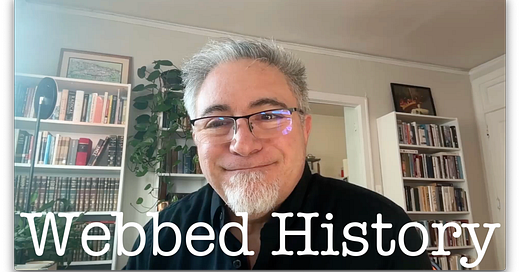



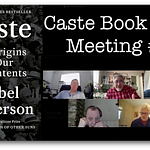
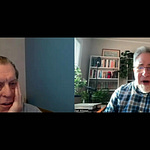
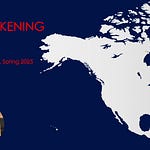
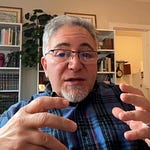

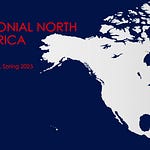

Share this post